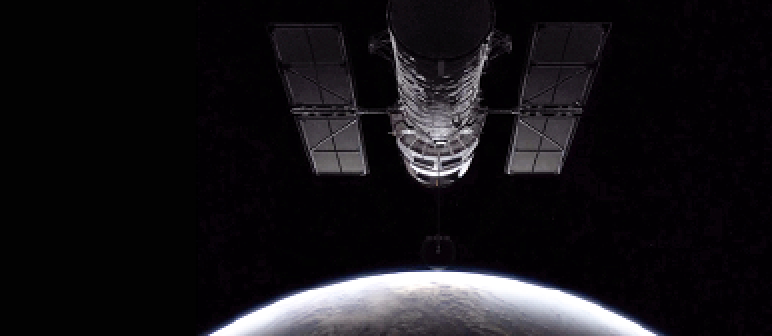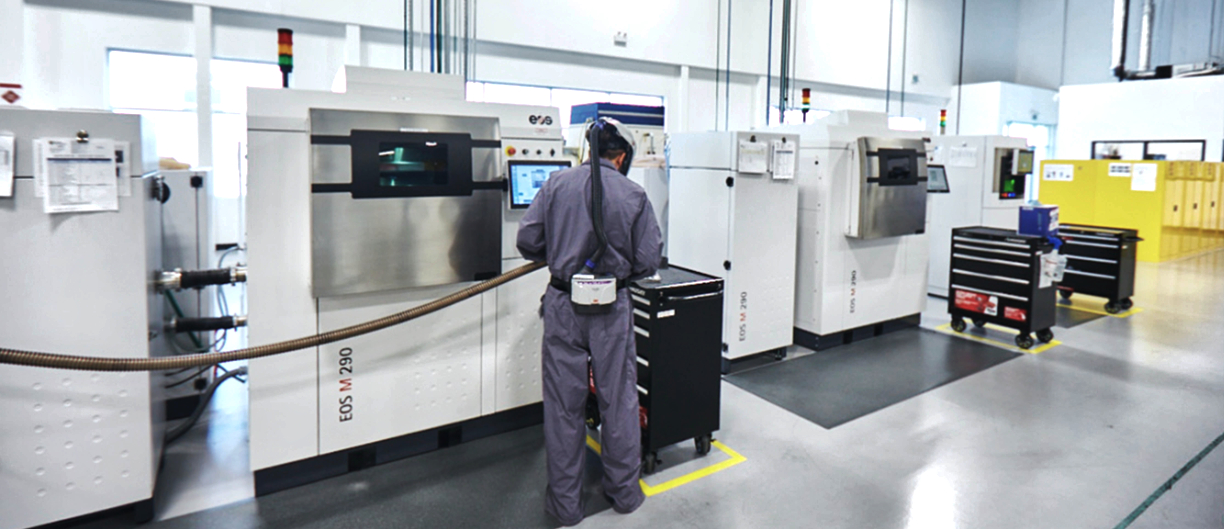As the speed of modern life accelerates, the demand for digital connectivity is growing in step, creating new and exciting business opportunities and completely transforming entire sectors.

The space industry is one such example. Companies such as SpaceX, Blue Origin and Planet are bringing space stories back to the mainstream — and manufacturers of Low Earth Orbit (LEO) satellites, Medium Earth Orbit (MEO) satellites, GEO stationary units, launch vehicles and even deep space exploration equipment, all are permeating the market.
This influx of activity attracted $14.5 billion of private investment in space infrastructure companies in 2021, up more than 50% compared to the previous year. It’s also brought fiercer, industry competition. Today, space manufacturers are under rising pressure to build parts that are lighter and better performing, all the while meeting the demand for shortened product development cycles, optimized cost structures and larger volume orders.
This “perfect storm” has inspired an increasing number of space manufacturers to explore Additive Manufacturing (AM). Because AM enables companies to essentially print 3D parts, layer-by-layer, it allows manufacturers to produce stronger parts with fewer components. AM’s innovative use of materials, meanwhile, makes it possible to build components that can reliably withstand hostile environments and extreme temperatures.
That said, there are a few barriers to AM. First, for well-established space companies, switching to a completely new manufacturing method requires extensive procedural and cultural shifts. Additionally, companies must be able to trust that this relatively nascent technology can consistently produce parts fit for space — and produce them at scale.
These challenges make the adoption of AM difficult, but by no means impossible. Following are the steps necessary to effectively leverage the power of AM and thrive in the next generation of space manufacturing.

» Step 1
Set the necessary groundwork Whether a manufacturer is building components for satellites or thrust chambers for rocket launchers, their main goals are generally the same. They want to...
> be lightweight and consolidate the components to improve reliability
> build them quickly, to reduce time-to-market
> improve performance, wherever possible, to differentiate themselves in the marketplace
With these goals in mind, making the business case for AM isn’t difficult. Compared to traditional manufacturing techniques, where components need to be manufactured individually and then assembled, AM allows manufacturers to print the same part in one piece. This, in turn, improves performance, reduces assembly costs and enhances reliability.
In a similar way, the tooling required to machine large components or complete casting works can take six to 24 months to build, inevitably contributing to very long development cycles. With AM, you simply design the part digitally and print, reducing the lead time by months, if not years.
Yet, switching from traditional manufacturing processes to AM involves a lot more than investing in a 3D printer. For one thing, the necessary capital equipment to produce parts at scale can cost more than $1,000,000. To make certain the equipment produces the intended results, manufacturers also need to navigate the challenges associated with materials development, manual post-processing, technology reliability and skilled labor shortages.
This explains why space manufacturers shifting to AM typically rely on a trusted and experienced AM supplier to guide them through the adoption process, help them identify necessary process changes and create new manufacturing design rules. Ideal partners should also be able to help manufacturers align AM to historical practices and existing rules — and make sure they have flight-worthy components.

» Step 2
Find a trustworthy supplier While finding a trustworthy supplier sounds simple enough, anyone who’s tried knows that’s not the case. Because the industry is so nascent, variations in maturity abound—in expertise, technology, processes, and industry standards.
To locate a supplier capable of supporting AM efforts in the space industry, it’s important for manufacturers to do their legwork. A good place to start is by finding a supplier who’s been working in the AM space for a decade or more, with a proven track record in the space sector. Ideally, they should already have parts in space and existing relationships with other space companies.
Next, because AM is constantly evolving, suppliers should have the ability to demonstrate significant investment in the field. Their advisors should be well-versed in Design for Additive Manufacturing (DfAM) and they should have an assortment of high-performing technology in-house. This can include capabilities such as..
» electron beam powder bed fusion
» laser powder bed fusion
» directed energy deposition
» selective laser sintering
» binder jetting
» fused deposition modeling
» precision machining
» heat treatment
» surface finishing equipment
The type of materials a supplier can work with is also a tell-tale sign of their maturity and capabilities. For instance, Invar is an exotic material ideal for space applications due to its low coefficient of thermal expansion (CTE) — which means, unlike other alloys, it can maintain its dimensional stability across a wide temperature range.
In fact, Invar is an optimal fit for critical optical supporting structures where thermal stability is required. The trouble with Invar is that it’s difficult to process and not readily available. This means it’s important to look for an AM supplier that has a strong history of making flight hardware from this challenging material.
» Step 3
Keep scalability in mind In the past, orders for space components were relatively infrequent and low volume, with most manufacturers receiving requests maybe once per year. Today, that number has surged to hundreds—and in some cases, thousands—of parts per year. As such, manufacturers must adapt their capacity to keep up.
In terms of Additive Manufacturing, this means finding a supplier who can go beyond the prototype and produce parts at scale. These suppliers are hard to come by, which is why Burloak has taken steps to fill that void.
First, because AM facilities aren’t nearly as commonplace as traditional manufacturing facilities, we recognize it can be difficult for space manufacturers to find a partner situated near their desired market. That’s why there are two North American AM facilities — a state- of-the art facility in Oakville, Ontario, Canada, for R&D production and a US production facility in Camarillo, California.

Second, as part of Samuel, Son & Co., Burloak Technologies is able to pull from 165 years of metal processing, distribution and parts manufacturing experience to develop standardized processes and procedures. When a new project comes to Burloak, manufacturers are assisted in developing standardized processes to meet their unique requirements, specifications and qualification needs.
One way this is accomplished is through the company’s metallurgical lab. Because this lab has been conducting mechanical testing in-house and collecting invaluable data for years, that data can be used to build out robust quality standards designed to meet a space customers’ needs. This information also makes it easier to anticipate costs and timelines for larger-volume projects.
The company’s strong Quality Management System, meanwhile, enables the implementation of standardized work procedures to better define things such as production needs, powder management requirements and quality specifications. As a result, we can reach unparalleled levels of quality and repeatability — levels that are high enough to meet the stringent requirements of the space industry.
The correct partner If you’re a space industry manufacturer exploring AM, consider reaching out to Burloak Technologies. World-class facilities that are fully integrated are offered, so a customer can find everything needed to succeed at AM — and all under one roof.

Burloak Technologies take its role as an AM leader seriously and is constantly adapting the firm’s offerings to support burgeoning industries, such as the space sector. Not only is the company an AS9100D certified aerospace company — experienced in manufacturing flight hardware — but we offer a robust materials lab and the capacity to build a complete portfolio of space parts.
www.samuel.com/Burloak-Technologies/industries/space

Jason Ball is Vice-President and General Manager of Burloak Technologies as of December 2021. In his role, he is responsible for leading the Company’s global operations and further accelerating the adoption of Additive Manufacturing (AM) technologies across various industries.
Jason began his career at GE in 2000, and held several increasingly complex leadership roles in engineering, quality, and product management in GE divisions including GE Power and GE Additive. In 2018, Mr. Ball led the development of GE Additive’s A.T.L.A.S. (Additive Technology Large Area System) Program. Following his time at GE Additive, Mr. Ball joined SLM Solutions, a manufacturer of industrial 3D metal printing machines, where he was first head of product management at the company’s headquarters in Germany, then General Manager of its Canadian business. Mr. Ball is a licensed engineer and holds a Bachelor of Applied Science in Mechanical Engineering degree from the University of Waterloo.


